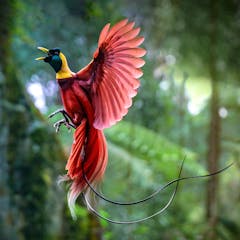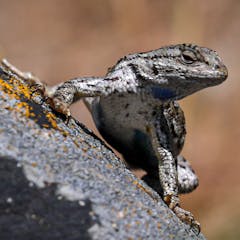
Articles on Species
Displaying 1 - 20 of 87 articles

Two-thirds of conservation actions studied were found to benefit target ecosystems and species.

The extinction of the dinosaurs sparked an explosion of bird species, according to the largest-ever study of bird genetics.

Stephen Garnett takes us inside a scientific spat about how to govern the naming of new species. Listen to The Conversation Weekly podcast.

North American ornithologists are seeking to replace all bird species named after people - but what should they be called instead?

H.B. Tristram was a Victorian clergyman and ornithologist who categorised a list of birds he’d found in Palestine.

From dark dragonflies becoming paler to plants flowering earlier, some species are slowly evolving with the climate. Evolutionary biologists explain why few will evolve fast enough.

Only after a species is identified and listed by taxonomists can it be protected. Yet we still don’t have one globally agreed-upon list of every species. A new 74-nation survey points to the solution.

New research looks at how different species have managed to cross geographic barriers throughout history and whether their individual traits played a crucial role in these journeys.

Invasive ants are a major threat to biodiversity, according to a study.

Crowd-sourcing images of caterpillars from nature apps allowed researchers to study the emergence of a new species of caterpillar.

Their drawings did not reflect the make up of the natural world.

A new ‘rule book’ for naming genomically sequenced bacteria is a boon for science.

Species will endure intolerable conditions long after the global average temperature stabilises.

Roughly 90% of species on Earth are believed to be undiscovered. Whether researchers will be able to identify them before they go extinct is unclear.

If scientific research is to take decolonization seriously, names for species should reflect this approach and consider the political, social and emotional implications.

The 15th UN biodiversity conference recently wrapped up the online portion of negotiations.

After more than 300 years of effort, scientists have documented fewer than one-third of Australia’s species. The remaining 70% are unknown, and essentially invisible, to science.

To get a grip on the biodiversity crisis, we’ll need to understand how wildlife is threatened in our own backyard.

How scientists discovered the ‘Popa langur’ was a separate species of just 200 monkeys.

We studied a rocky shore to see how global changes are playing out within habitats.
